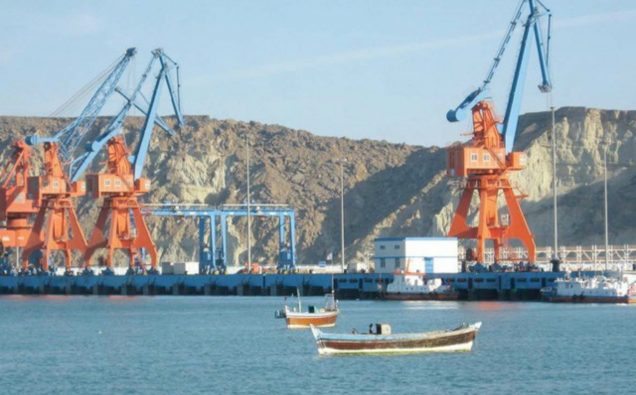
Pakistan took an important step this week toward producing energy from a coal-fired Sahiwal Power plant in Punjab. The 1380 MW plant is part of a series of projects Chinese collaboration is realizing under $ 52 billion China Pakistan Economic Corridor.
Described as a game-changer for Pakistan and the region, the huge Corridor plan has already stepped up economic activity across a range of areas including road and rail infrastructure, Gwadar port, businesses and energy. Since joining the fight against violent extremist groups after 9/11 terrorist attacks, the CPEC is the second major opportunity for Pakistan, following a decade of US assistance, to defeat militancy and extremist mindset.
The CPEC, as it is commonly known, is likely to have wide-ranging socio-economic and strategic ramifications for both neighbors China and Pakistan. While China China will have a much shorter access to the oil-rich Gulf through its Xinjiang province and all the way through Pakistani Gwadar Port, Islamabad will get a much-needed boost for its economy, and with a tool to fight extremist violence.
But the key benefit average Pakistanis seek to derive from this massive economic program is the uplift through employment opportunities.
According to China’s Global Times publication, the CPEC will generate around 2.3 million jobs for Pakistanis over the next couple of years.
These new opportunities will be open to all levels of workforce including skilled professionals. laborers and service sector workers.
According to Chief Minister Punjab Shahbaz Sharif, employment of young people across the country will particularly be helpful because it will help counter the appeal of extremism.
The signs of progress under thee CPEC partnership are becoming visible across Pakistan. Be it Port Qasim Power Plant or Sahiwal Power, thousands of Pakistani engineers and laborers are seen working alongside their Chinese counterparts. The projects have also provided an opportunity for the Pakistani youth to learn technologies of Chinese origin.
In the large cities infrastructure projects including the Mass Transit Project, Metro Orange Line or Karachi Circular Railway have also generated hundreds of thousands of jobs.
“Work on projects worth US $ 30 billion especially those of energy has started; This activity will entail the creation of more and more jobs for unemployed and under-employed Pakistanis,” says Ahsan Iqbal, Federal Minister for Planning and Development and In charge of the CPEC implementation
Even more jobs are expected with the establishment of special economic zones under the CPEC that will also integrate the nation into global production chains.
Despite the apparent benefits, the CPEC has also faced criticism in Pakistan over the distribution of projects among the provinces in the country.
The debate mirrors Pakistanis’ enthusiasm for the project which could serve as a major driver for the local economy but now it is up to the leaders that they ensure a fair distribution of the benefits from the CPEC across Pakistan’s provinces and northern areas.
Fortunately for the leaders, the CPEC winds through the length of the country right from the top Northern Areas down to Punjab, KP, Balhcistan and Sindh.
As a result investment inflows into the projects would naturally have a snowball effect in terms of capital and economic uptick.
A major reason why the CPEC holds such enormous significance in Pakistan’s fight against terrorism is the progress it has made in the last couple of years in clearing out tribal areas of Afghan and Tehreek e Taliban Pakistan militants under the Zarb e Azb program. A low-intensity militancy in Balochistan has also been contained to a great extent, although serious regional challenges remain.
The timing could not have been more perfect for Pakistan. In the years ahead, both the US and Chinese support will be critical to Pakistan’s counterterrorism success as well as defeating the militant mindset though a powerful narrative- an area where it needs to do a lot of work through economic development as well as education reforms.
















